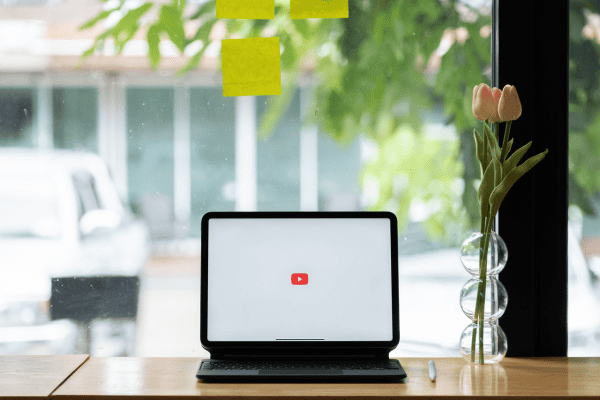For many businesses, marketing costs more in employee hours than it does in buying advertising space online, but creating content, connecting with an audience organically, relying on your site’s SEO and your social media posts can only get you so far. At some point, you might be inclined to step into paid advertising.
Whether it’s bidding for ads on Google or Bing, or diving headfirst into the ad services available on LinkedIn, Meta, TikTok or other social media sites, advertising online is a big and expensive (for some) step and jumping straight in without an appropriate strategy will cause issues for your business.
Social Media Advertising

If you’ve been on any social media site today, you’ve probably encountered at least a dozen paid adverts. There’s not one specific formula for all social media platforms – each does it in their own unique way and the first step to deciding if you want to advertise on social media is figuring out how active your audience is on that site.
For B2B companies, of course, LinkedIn might seem like the first and only place to go. But it’s important to remember that even though your target businesses might be on LinkedIn, their owners and managers will have their own social media accounts, whether on Facebook, Instagram, Twitter (X) or even TikTok.
Obviously, some social media sites are more focused on specific audiences, but it’s best to research the demographics of each before you start a full-blown campaign. Thankfully, most platforms have incredibly detailed profiles on the occupation, hobbies, age, and a whole lot more of their users so you can be highly targeted about who sees your adverts.
How to get the most out of advertising on social media?

Your organic social media posts should do the hard work in explaining your business and your brand, so don’t bog down your paid adverts with content explaining who you are. Instead, focus on your audience and what you want them to do.
If you’ve got quite a short customer journey, your goal might just be to put your product in front of people and give them a link to buy it. If your customer journey is much longer, it might be more beneficial to use your advert as an opportunity to encourage them to give you their contact information. Whether it’s providing an email address to get access to a useful guide or signing up for a competition, it’s a great way to hook in people who might think your product or service is right for them.
Remember that paid advertising might be your initial point of contact for new prospects – so you have to put your best foot forward. As most social media platforms use a pay per click (PPC) model, anything you can do to quickly qualify your leads, whether you lead with a hook as simple as “Are you a business owner looking for new leads?” or “Do you want to know the secret to generating new leads?” – for those not interested, they won’t click and you won’t have to worry about wasting money on uninterested parties visiting your site.
Search Engine Advertising

Search engine optimisation has been a key part of marketing businesses for over a decade. It’s a great way to organically increase visitors to your site, but it requires near constant observation and updating and for many businesses, it’s much easier (and cheaper) to bid on advertising space for keywords than take the time to create the dozens (or hundreds in some cases) of backlinks required to rank highly on certain keywords.
Search engines Google and Bing both have a huge range of advertising options available and thanks to their PPC model, you only pay when people click on your site. Unlike social media, when people use a search engine, they are already looking to visit sites focused on those search terms, so by selecting relevant keywords, you’ve already done the work qualifying your prospects.
How to get the most out of advertising on search engines?

Whether you are outsourcing your search engine advertising work or you’re managing it in-house, you have to focus on conversions. Lots of agencies will boast about how many clicks they can get, but if they’re not coming from people who turn into customers or clients, then that traffic is useless.
If you’ve not taken steps to improve on your website’s SEO, firstly give that a go (it’s easier than you think). As Google and Bing’s priority is to give its users a good experience with its adverts, the keywords you’re targeting have to be mentioned on your site – they will rank your advert lower (or not at all), even if you are one of the higher bidders. So make sure you’re targeting relevant keywords.
Your search engine ads don’t have to link directly to your homepage, but if you’ve built your website to convert prospects into customers, it is usually the best place to start. For suppliers, or people selling many products, if you’re targeting keywords that are of those products/similar products, it’s best to link directly to the pages they’re listed on.
Don’t think of paid advertising on Google and Bing as shortcuts to avoid having to worry about SEO – they’re closer to rocket boosters and will support and add to your SEO efforts.
And NEVER target your business’s name as a keyword. If people are searching that, they’re already looking for you. Don’t waste your money with them clicking your ad instead!
Advertising on YouTube

You might be thinking, “But YouTube Ads come under Google Ads” and you’d be right – but YouTube is also considered by many to be a social media platform that operates quite differently to most other social media sites, even ones focused on videos like TikTok and Instagram.
YouTube is the one of the only platforms available that lets you get long-form video content in front of people. Adverts on YouTube can range from 5-second quick animations to 10-minute explainers on a specific subject. Many larger businesses treat YouTube advertising the same way they treat TV adverts. And as an opportunity to build brand awareness, it uses the same data that Google has access to so it can be a great way to get any relevant video content in front of prospects – adverts on YouTube can help you generate leads.
How to get the most out of advertising on YouTube?

Similarly to advertising on social media, it’s all about the hook. You have 5 seconds before someone clicks that 'Skip' button, and not giving them a reason to keep watching won’t convert anyone.
Unless you’re trying to build up your business’s following on YouTube, it’s best to use YouTube as part of your existing sales strategy, only targeting prospects that have already visited your site or already follow you on social media. There are two best practice approaches for advertising on YouTube, and they each have their own place.
1: Give people an interesting or informative video on a topic that’s relevant to them. Link back to your site – or a specific page on your site – in the hopes that it re-engages that prospect.
OR
2: Use a vlog-style video of you, or someone in your sales team, to push leads towards signing up for a webinar, competition, or for free, useful content on your site.
There’s no harm in trying both approaches, but video is one of the more challenging marketing mediums to get right. But that means that if you do create great video content, you’ll massively stand out from your competitors.
Advertising with Influencers

This is a much newer, and more unique strategy for marketing, but there are 1,000s of people online who make their living from advertising services and products to an engaged audience. Whether it’s Instagram, TikTok, YouTube, Facebook, even Snapchat, just about any platform where people can amass a following, people will be willing to leverage that following to help your business.
You might already have in mind who the major influencers in your community are – for some industries, tapping into the more active influences can be incredibly expensive, but the more niche your product is, the less money it will cost you.
Don’t think that influencer advertising is exclusively for B2C businesses either. Finding people who have a wide following within your industry might take a bit longer, but it’s a great way of getting your business’s name to people who haven’t heard of you yet.
How to get the most out of Influencer advertising?

More than anything else we’ve covered, there’s no real right or wrong answer for influencer marketing. You can reach out to an influencer’s business email yourself, but you will have a much more professional experience using an agency.
Of course, influencers aren’t always business professionals – they might not even have a huge amount of knowledge (or any) about your product before you reach out. It’s important to make sure that if an influencer is representing your brand, even if it’s just for one post, they’re the right fit for your business and their audience has a wide overlap with your audience.
Look at previous companies they’ve worked for. You could even reach out to them to ask about the experience. This is one of the best ways to tap into a new audience, and by targeting many different influencers in a space it’s a great way of getting your brand’s name directly in front of a huge amount of people.
Just like with other forms of paid advertising, you have to keep your CTAs simple. Giving a unique discount code is not just a good way to push people to your product(s) but if you’re paying multiple influencers, it’s a great way to track who is converting the most leads. Most of what influencer advertising can offer is brand awareness, especially with more luxury products and services.
If you want an easily trackable ROI for your advertising efforts, it’s better to focus your efforts away from influencer marketing.
With paid advertising online, there’s no one-size-fits-all strategy – you are going to have to experiment to find out what works and that will likely cost a significant amount of money. Whether you’re looking for direct conversions, building your brand awareness, or you just want to build up a database of interested prospects, paying for advertising is a brilliant way of finding new and existing leads and converting them into customers and clients.
This is only one side of paid advertising, and there are plenty of other (offline) avenues you can take to advertise through that can have a big impact on your marketing efforts. You’ll have to keep an eye out for a blog on that!
You have to approach paid advertising with clear goals and a strategy in mind, so if you’re interested in talking with a marketing expert to help build up your strategy, book in a 60-minute strategy call with our MD, Emma, where you can go through your current marketing efforts and get advice on what you can do to boost your exposure.
